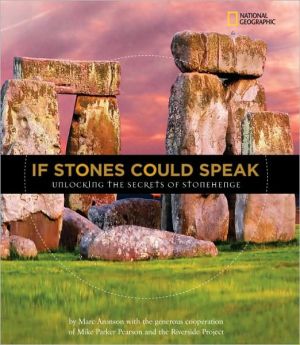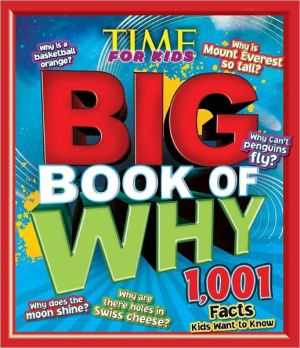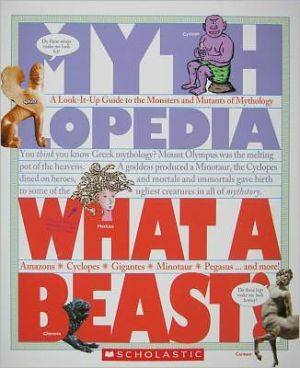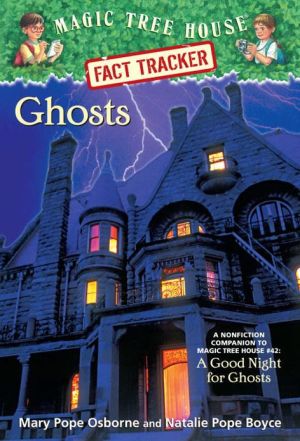If Stones Could Speak: Unlocking the Secrets of Stonehenge
What are the secrets of the ancient stone circle? Were the carefully placed stones a burial site, an ancient calendar, a place of Druid worship...or even a site of sacrifice? World-renowned archaeologist Mike Parker-Pearson has spent the last seven years on a quest to answer these and many other questions. In If Stones Could Speak, award-winning author Marc Aronson joins the research crew and records their efforts to crack Stonehenge’s secrets. National Geographic helped sponsor the Riverside...
Search in google:
What are the secrets of the ancient stone circle? Were the carefully placed stones a burial site, an ancient calendar, a place of Druid worship...or even a site of sacrifice? World-renowned archaeologist Mike Parker-Pearson has spent the last seven years on a quest to answer these and many other questions. In If Stones Could Speak, award-winning author Marc Aronson joins the research crew and records their efforts to crack Stonehenge’s secrets. National Geographic helped sponsor the Riverside archeological team’s mission, and now young readers can journey behind the scenes to experience this groundbreaking story first-hand, through the eyes of the experts. Mike and his team have revolutionized our understanding of Stonehenge by exploring the surrounding landscape for clues about the stones — an idea first suggested by a visitor from Madagascar. The results have been breathtaking: The team recently unearthed the largest Neolithic village ever found in England. Marc Aronson had total access to the site, the team, and their work over two seasons of digging and brings the inspirational story of the discoveries taking place at this World Historical Site to young readers. The informative and drama-driven text includes tales of dead bodies, cremations, feasting, and ancient rituals, as well as insights into the science of uncovering the ancien t past. The expert text, stunning photography, and explanatory maps and illustrations will all help young readers see this ancient monument in totally new ways, and inspire future generations of archaeological explorers.The Washington Post - Abby McGanney Nolan…Marc Aronson's new book presents archaeology not as an ancient, dusty endeavor but as a vibrant, down-in-the-dirt scientific pursuit—groundbreaking in both senses…The book's wonderful graphics and clear explanations give young readers a sense of the theories about Stonehenge through the centuries.
\ Publishers WeeklyIllustrated with full-color photos, this informative and perceptive book focuses on the Riverside Project’s archeological expedition to Stonehenge. Aronson, who visited the team on the dig, provides a fresh first-person perspective as he explains that while Stonehenge has traditionally been viewed as an ancient temple, a team member proposes that it might have been more like a graveyard, used “to usher, to welcome, the honored dead into their permanent home.” As Aronson recounts how the team interprets the data they collect, he emphasizes the value of remaining open to new ideas: “We are seeing more in Stonehenge because more people are looking, and in more ways.” A revitalizing perspective on an enigmatic place. Ages 10-up. (Mar.)\ \ \ \ \ Children's Literature - Paula McMillen\ Working with chief archaeologist of the Riverside Project, Mike Parker Pearson, the author discusses the often-serendipitous nature of scientific discovery. This book does not deal with questions about how Stonehenge was built, but rather with understanding why it was built. The conventional wisdom—that it served as a temple—was turned on its head when an archaeologist from Madagascar was brought in to look at the site, and he suggested that it was a place to honor and assist the transit of the dead. Having studied a similar culture on Madagascar where the people built magnificent edifices of stone for the dead while living in humble wooden structures, Ramilisonina caused archaeologists to look at Stonehenge—and its surroundings—in a totally new way, leading to monumental discoveries of adjacent sites that fit with this new theory. The science of archaeology has advanced greatly in the last couple of decades and some of the earlier data that had been puzzling those studying Stonehenge turned out to be miscalculations by earlier scientists. Wonderful photographs of people as well as places, and abundant supplementary information in the form of chronologies, brief biographies of relevant archaeologists, and suggestions for further reading and research are plusses here. But perhaps the book's most unique contribution are these ideas: science often advances by stops and starts; new knowledge is often as much the result of imagination and inspiration as hard detailed fact gathering; and there is always something new to learn. Reviewer: Paula McMillen, Ph.D.\ \ \ Abby McGanney Nolan…Marc Aronson's new book presents archaeology not as an ancient, dusty endeavor but as a vibrant, down-in-the-dirt scientific pursuit—groundbreaking in both senses…The book's wonderful graphics and clear explanations give young readers a sense of the theories about Stonehenge through the centuries.\ —The Washington Post\ \ \ \ \ Kirkus ReviewsStonehenge is one of the most enduring and mysterious monuments in the world. For centuries, archeologists have spun theories on these stones' existence-are they a Druid temple? An ancient calendar? A work of magic? In 2005, Mike Parker Pearson and the Riverside Project team made a series of astonishing discoveries that changed the way the world looked at Stonehenge yet again. In earnest and engaging prose, Aronson follows Pearson and his team. Extrapolating from a tradition from Madagascar, Pearson suspects that Stonehenge may actually be a burial ground that is intricately connected to another henge, built of wood. The author concedes that Pearson had to explain his theory many times before understanding sunk in-this may hold for readers as well. Visual learners will keep paging back to the overhead map, trying to follow the trail. But the sense of wonder and excitement rings true regardless. Pearson's hypothesis is only one of many, and the author characteristically urges readers to question what they see and always keep an open mind, just like this endearing archeological team. (epilogue, timeline, glossary, author's note, further reading) (Nonfiction. 10 & up)\ \ \ \ \ School Library JournalGr 5–8—This title is not just an examination of recent breakthroughs at Stonehenge, but rather an essay on the process of archaeology and a hopeful reminder to future archaeologists that all the great sites are not yet dug or fully understood. In 2005, the Riverside Project, led by Mike Parker Pearson, made several significant discoveries that placed Stonehenge within a much larger Neolithic complex. Pearson began with a hypothesis, suggested by a retired archaeologist from Madagascar, that, as in Madagascar, the stone of Stonehenge was to honor ancestors and the dead, and that there would be a sister complex made of wood for the living. This idea was radically different from the previously accepted theory of Stonehenge being used as a temple. The ongoing work of the Riverside Project has revised the long-accepted dates of when Stonehenge was built and found much to support Pearson's hypothesis. Aronson writes in a casual style and addresses readers directly, which effectively conveys the excitement of this research, although it does occasionally assume some background knowledge that seems unlikely. The story of how Pearson became involved in archaeology and came to work at Stonehenge gets nearly as much attention as the work currently being done there and underscores one of Aronson's central themes—that we are constantly adding to our understanding of the past. Large, colorful photographs complement the text and several shots capture what archaeology-in-progress looks like. A useful, attractive, and highly readable book.—Caroline Tesauro, Radford Public Library, VA\ \








